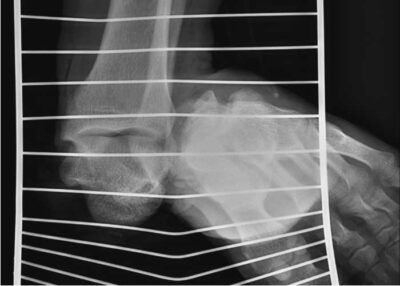Subtalar Dislocation Specialists
Do you participate in sports such as snowboarding, skiing or are you active in rock climbing? If so, you may be at risk of a subtalar dislocation. Subtalar dislocations can cause pain, deformity and swelling in the ankle. Foot and ankle specialists, Doctors Thomas Haytmanek and Jonathon Backus have diagnosed and treated many patients in Vail and Frisco, Colorado, as well as Denver, Boulder, and surrounding Summit County areas who have experienced a subtalar dislocation or an ankle dislocations. Contact The Steadman Clinic’s Sports Foot and Ankle team today!

What is a Subtalar Dislocation?
The talus is typically referred to as the ankle bone and is the second largest foot bone after the heel bone (calcaneus). It is located between the tibia (shinbone) and above the calcaneus (heel bone). The subtalar joint is the juncture between the talus and the calcaneus. A subtalar dislocation is a rare ankle injury that can also be thought of as a dislocated hindfoot and results in deformity and pain. It is when the subtalar joint comes out of its socket and sometimes affects surrounding ligaments. The subtalar can dislocate one of four ways: medially (toward the inside) also called “basketball foot” or “acquired club foot”, laterally (toward the outside), posteriorly (to the back) or anteriorly (to the front) in relation to the talus. A subtalar dislocation is usually caused by a fall from height or a significant impact, such as a car accident or impact from skiing or snowboarding. Our orthopedic foot and ankle specialist treat subtalar dislocation in patients from Vail, Colorado, and the surrounding Mountain Ranges.

What are the types of subtalar dislocation?
Most subtalar dislocations are medial, which means the hindfoot turns inwards. The second most common type is lateral, which is when the angulation is outward. Anterior and posterior dislocations are also possible, but less common. This type of injury is when the foot is clearly turned out of alignment from the ankle.
What are the symptoms of a subtalar dislocation?
A subtalar dislocation often results in additional injuries to the foot and ankle such as fractures to the neighboring bones. The symptoms associated with subtalar dislocation:
- Pain
- deformity
- Swelling
- Tenderness
- Ankle deformity
- Inability to walk on the affected ankle
How is a subtalar dislocation diagnosed?
Our specialists will most often perform an x-ray usually followed by a CT scan to determine the type of ankle injury after a physical examination is completed. A CT scan can also provide insight into other areas of the foot and ankle that may have also sustained damage. At times an MRI is needed to evaluate the soft tissue structures of the hindfoot and check for interposition of the surrounding tendons.
What are the treatment options for subtalar dislocation?
Non-surgical treatment:
If the type of subtalar dislocation does not require surgery, Our specialist will relocate the foot back to its original and proper alignment using traction. This is done by holding the knee in a flexed position in order to relax the muscle. When the muscles are relaxed, the doctor is able to realign the ankle joints by reversing the injury through manual pressure. This typically does involve general anesthetic in the operating room.
Surgical treatment:
If the subtalar dislocation requires surgery, it may be due to the fact that the dislocation has caught on neighboring structures and additional injuries were sustained. General anesthesia is typically used for the patient, while the orthopedic specialist applies manual pressure and traction on the dislocation site. Your doctor will further evaluate your injury with x-rays. An incision may be needed to remove any interposed structures. Recovery time varies depending on other injuries that may have been sustained within the foot and ankle.
For more information on subtalar dislocations, please contact the office of Dr. C. Thomas Haytmanek, and Dr. Jonathon Backus, Orthopedic Foot and Ankle Specialists serving Vail, Colorado and the surrounding Eagle, Vail Mountain Range Community.
